The NGEE Tropics project team selected sites for Phase 2 that are essential to attaining our goals and deliverables. Our Phase 2 work will build on infrastructure developed at Phase 1 pilot sites. We will also leverage extensive infrastructure and logistical support for additional Phase 2 sites with our international partners and collaborators.
Developing FATES and ModEx from regional to continental perspectives requires defining the gradient change in the measured variables that represent key model drivers and establishing boundary conditions to evaluate the model’s ability to accurately simulate key emergent benchmarks. Puerto Rico offers an excellent regional testbed for exploring how anthropogenic and natural disturbance processes impact forest structure and function across gradients in precipitation, soil fertility, and variation in time since disturbance. Such disturbances could be anthropogenic like deforestation or naturally occurring, such as fires and hurricanes. Puerto Rico provides a number of rich environmental datasets for model testing of FATES at regional scale, and will help enable the team to address anthropogenic disturbance at continental or global scales during Phase 3.
Due to its vast size, at continental scale the Amazon basin exerts a number of strong effects on Earth system dynamics. Phase 2 research there will benefit from decades of previous research including Phase 1, and will include new activities conducted at individual (RFA1), hillslope (RFA2), and basin-wide (RFA3) scales. This work will represent the first fully-coupled E3SM-FATES simulations and establish a strong foundation for global-scale research during Phase 3.
Another challenge for our Phase 2 experimental approach is canopy access to enable the measurement of key processes from the deep soil to the canopy-atmosphere interface. Canopy access sites include two Panama locations (Parque Metropolitano and Parque Nacional San Lorenzo), Lambir Hills on the island of Borneo (Sarawak, East Malaysia), the Daintree Research Observatory in northeast Australia, and National Institute for Amazon Research (INPA)’s Experimental Station for Tropical Silviculture north of Manaus in Brazil. These canopy access sites will be instrumented and studied using comparable methods and instrumentation for RFA1 research activities.
Phase 2 research will also continue to benefit from a strong partnership with ForestGEO, including mortality surveys that include 10 ForestGEO sites spanning a range of forest types in Latin America and Southeast Asia. Additional sites include Paracou, French Guiana, for tree functional composition data, and the Agua Salud project in Panama for additional hillslope hydrology activities.
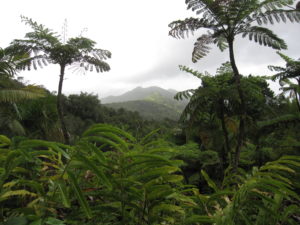
Puerto Rico
Puerto Rico has a long history of tropical forest research by the U.S. Forestry Service, individual institutional projects, University of Puerto Rico, and NSF-funded research (National Ecological Observatory Network, Long-term Ecological Research, and Critical Zone Observatory). NGEE-Tropics benefits from collaborations with these institutions and individuals. Sites include Sabana, El Verde, and Icacos.
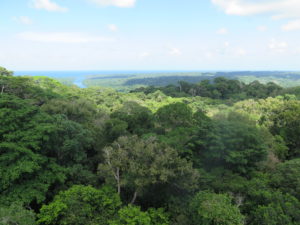
Panama
Research in Panama will continue to build on our strong research and field collaborations with Smithsonian Tropical Research Institute. Its setting near the Equator and as a biological corridor between two continents makes Panama exceptionally dense and diverse in plant and animal species and habitat. Sites include Barro Colorado Island, Parque Natural Metropolitano, San Lorenzo, and Agua Salud.
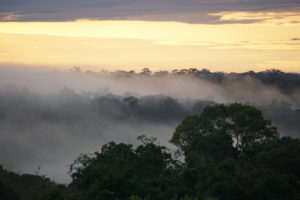
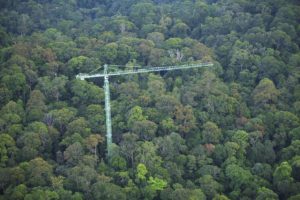
Brazil
Manaus activities will take place at the Experimental Station of Tropical Forestry (EEST in Portuguese), located ~50 km north of the city of Manaus. This National Institute for Amazon Research (INPA) Zona Franca 2 (ZF2) site is located along the ZF2 road (referred to as “ZF2” field site) in Amazonas State, Brazil.
Malaysia
Lambir Hills National Park in Sarawak, east Malaysia, on the island of Borneo includes 6,800 ha of lowland mixed dipterocarp forest with the highest tree species richness recorded in the Paleotropics.
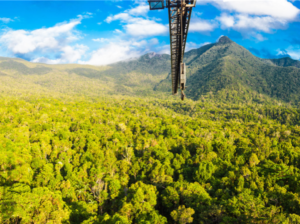
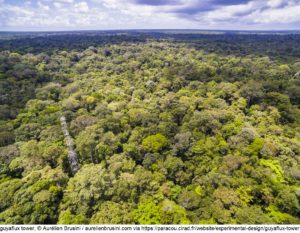
Australia
The Daintree Research Observatory is located in a tropical rainforest in Queensland, Australia, and is operated by the James Cook University. Located in a UNESCO world-heritage park, the forest is pristine and dominated by native species to the region.
French Guiana
The Paracou site in French Guiana is the location of the GuyaFLUX tower. The station is located in the coastal part of French Guiana approximately 50km NW of the European Space Center at Kourou. The site is part of a private domain of about 40,000 ha, owned by the Centre National d’Etudes Spatiales, France.